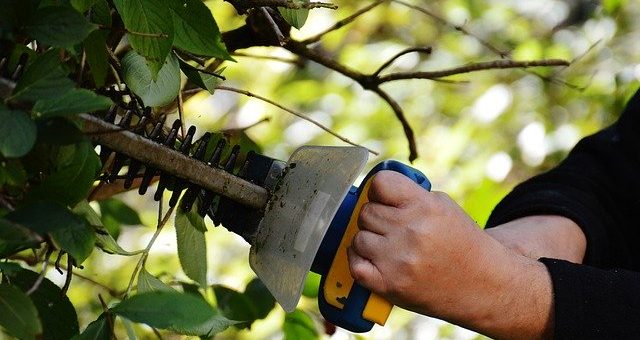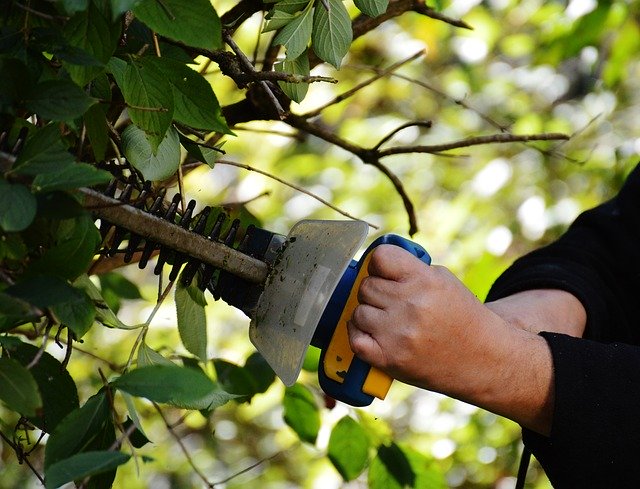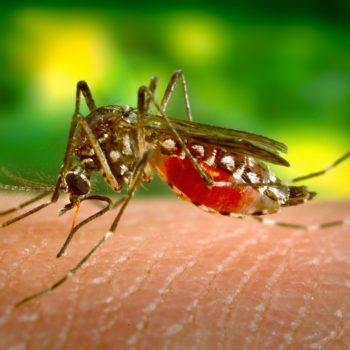
When and How to Sharpen a Hedge Trimmer
Want the sense of pride and accomplishment that comes with knowing how to sharpen a hedge trimmer, without having to lug the thing down to the repair shop? Keep reading. We’re going to show you how and when to get those blades sharpened.
When to Sharpen Hedge Trimmer Blades
When it comes to sharpening hedge trimmer blades, it’s best to do it regularly, rather than wait until they become blunt. You should be able to get about fifty hours of use before they need to be sharpened. This will vary a bit though depending on the type of foliage you’re cutting. If the cut becomes ragged and starts to tear at branches, it’s time to sharpen the blades.
Safe Work Environment
With any power tool, safety is your first and main concern. The first step is to cut the tool’s power source.
If you’re working with an electric hedge trimmer, unplug it. If it’s a battery-operated trimmer, remove the battery. With a gas-powered hedge trimmer, take out the spark plug.
Now that the trimmer is safe to work with, you’re ready to sharpen those blades. Make sure you have a clear and stable work surface and room to move around. A flat workbench with a vice will make the job easier. And remember: always wear work gloves!
How to Sharpen a Hedge Trimmer with a Mill File
Use a mill file to sharpen the blade by hand. A mill file is a single-cut file with the teeth pointing in the same direction.
Always file in the direction of the teeth. If you file against them, you’ll blunt the blade. Likewise, if you use a double-cut file, you’ll rough up the blades.
If your hedge trimmer has two blades, the first step is to align the upper and lower blades. Squeeze them together by hand. If they’re not exactly aligned, leverage the head of a screwdriver between the teeth to get them precisely in line.
Each tooth has three points to sharpen. The two sides, and the tip.
Hold the hedge trimmer in place so the blade can’t move while you’re working. Using a downward stroke, follow the natural angle of each tooth. At the end of each stroke, lift the file off and repeat. A few strokes with the file ought to be enough.
To test your work, run a piece of paper across the newly-sharpened edge. The tooth should cut the paper cleanly and evenly.
Filing will create a build-up of shavings at the bottom edge of each tooth. Use a sharpening stone to remove it. Then, finish off the sharpening with a coat of linseed oil to the blade which will help preserve the lifespan of the tool.
Sharpening Hedge Trimmer Blades with a Grinder
You can also use a grinder to sharpen the blades. The process is the same, but there are other factors to consider.
Use a clamp to hold the blades firmly against your flat workspace. The grinder is more aggressive and the blade will move too much if not held in place.
The grinder will produce sparks, so it’s important to wear safety goggles. Also, make sure you’re not working near anything flammable. Cloth, gasoline or an open can of turpentine, for example.
Professional Blade Sharpening
The third method of getting your blades sharpened is to take your hedge-trimmer to a professional. You may not get the same sense of self-satisfaction, but it’s relatively inexpensive, less hassle, and you’ll know the job’s been done right.
DIY or Professional Service?
It’s relatively easy to learn how to sharpen a hedge trimmer. You’ll get a sense of independence and accomplishment, and the convenience of not being without your tool. But if you don’t have the time, it makes sense to have the blades sharpened professionally.
Need hedge trimmers? Stop by to take a look at our complete line of Stihl trimmers.


